What ‘season’ are you? Color analysis is making a comeback
Published in Fashion Daily News
MINNEAPOLIS -- Out of all the various forms of fashion faux pas that a woman can make, perhaps the most common offense is thinking that she looks good in black.
Chances are, she does not.
“Black does not look good on everyone,” says Haley Armstrong, a personal color consultant from Edina, Minnesota. “It’s not a slimming color. It really washes people out in most cases. Navy blue will almost always be better.”
My mom squad of suburban middle-aged friends recently hired Armstrong to cast her trained eye on each of us. That is how I found myself seated in front of a mirror, as Armstrong draped one scarf after another of varying hues across my shoulders. Between sips of prosecco and bites of cheese, my friends, guided by Armstrong, commented on which colors complemented my natural features and which ones brought out “disharmony” and darkness under my eyes.
My friends underwent the same experiment and were crestfallen to learn that black did not suit them, nor did hot pink.
Armstrong, who runs the business ColorFixx, is part of a growing number of advisers in Minnesota and beyond hopping on the trend of seasonal color analysis. Are you a spring, summer, autumn or winter? That depends on your natural coloring — particularly your eyes, skin and hair. The theory goes: Know your season, and unlock the palette of shades that flatter you the most. Such knowledge can inform not only one’s wardrobe choices, but selections in lipstick and blush.
I’d heard others swear by this service, one calling it life-changing. A male colleague had his colors done (as a gift from his wife), and learned he was a spring. He jettisoned his black hoodies and shirts from his closet and acquired a new sense of fashion confidence.A retro fad
Some of us might remember our own moms adapting similar principles. Seasonal color theory was popularized in 1973, thanks to the book “Color Me Beautiful” by Carole Jackson. (Color Me Beautiful is the same company that trained Armstrong.) In 1986, the Star Tribune published a story about Beauty for All Seasons, a color-consulting business based in Idaho that eventually grew to an empire of 13,000 consultants across the United States.
But the initial fad was not inclusive and focused mostly on white women, said personal stylist Brenda Iris of Mindful Styling, who also offers color consultation at her studio in Loring Park. Iris, who was born in Mexico, said the industry has evolved but still needs to grow to better assess the seasons of people of color. She says they are often assumed to be winters or autumns because of their darker features, but there are always exceptions.
“I have broken some rules, and I trust my eye,” said Iris, who says her clientele includes women in the C-suite.
The resurgence of seasonal color analysis can be traced to TikTok and other social media platforms. Videos of the draping sessions are entertaining, even if the average layperson can’t quite “see” what the stylist sees. AI apps promise to analyze your colors after you answer a few questions and submit a selfie. At the heart of the trend is a desire to know that we’ve been doing it wrong our whole lives, and that there may be a color out there that could free our untapped potential.
Iris charges $90 to $150 per person for a group rate, depending on the size; a one-hour individual session starts at $269.
She thinks there’s another reason for the comeback of colors.
“During COVID, we all went into very neutral and at home,” she said. “I think people are growing tired of the monochromatic — white T-shirts and blue jeans. People are craving individuality. They’re craving more creativity.”More than four seasons
While there are always exceptions, here’s how the seasons work:
Winters typically have high contrast in their features, such as lighter skin and dark hair. They can pull off wearing bold jewel tones such as ruby red or emerald green (think Salma Hayek, Megan Fox or Lupita Nyong’o).
Springs have warmth in their skin’s undertone, such as a golden or peachy hue. It would not be uncommon if they have blond hair and blue or green eyes (Kate Hudson, Taylor Swift).
Not intuitively, summers have cool undertones, such as ashy tones in their hair, or blue, gray and other cool shades of eye color, and are best suited with soft, muted shades (Jennifer Aniston, Kate Middleton).
And autumns are earthy, toasted and grounded, often with hair that ranges from honey-golden to chocolate brown (Jennifer Lopez, Beyoncé).
On top of that, consultants can help you determine 12 to 16 “sub-seasons” that can steer you to a more precise set of flattering shades. Critics of color analysis liken the practice to pseudoscience, noting you may get conflicting results from different consultants. But for me, the experience was eye-opening.
After I spent 15 minutes in the chair, Armstrong and my friends arrived at a consensus: I’m a winter. (For what it’s worth, ChatGPT confirmed this.) That means I should wear brightly saturated colors such as fuchsia and cobalt.
The problem is I’m drawn to drab hues favored by elderly Mennonite men. You like what you like. Winters can also apparently pull off black and true white. (Don’t hate the winters in your life.)
Fear not, there are always hacks. Armstrong said if you adore a color that is not in your palette, try wearing it as pants or a skirt. Most people can don any color in clothing or lipstick; it’s the specific shade that matters. Whenever Iris, an autumn, dresses in black, she frames her face with gold jewelry.
“You don’t have to throw your closet away,” Iris said. She advises that women trust their instincts and not follow the fads in fashion or makeup. Look in the mirror and ask, “Do I look good in it?”
And if you’re not sure, it’s never been easier to find, and pay for, extra validation.
©2025 StarTribune. Visit at startribune.com. Distributed by Tribune Content Agency, LLC.
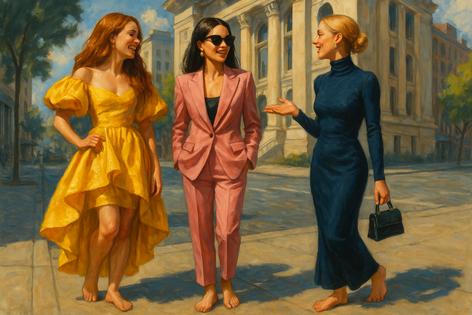
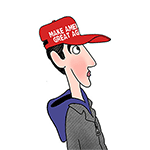
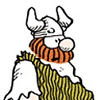
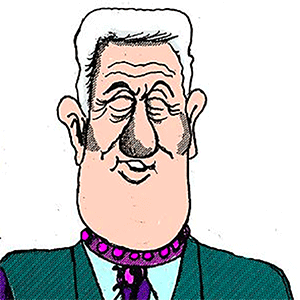


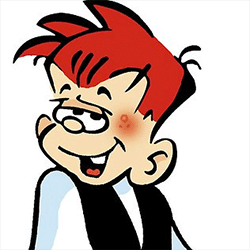
Comments